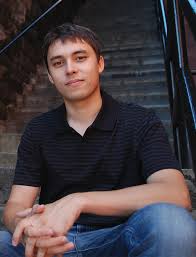When people talk about the giants of the digital age, names like Steve Jobs, Mark Zuckerberg, and Elon Musk usually dominate the conversation. Yet behind one of the most revolutionary platforms in internet history stands a man who rarely seeks the spotlight, a man whose vision changed how the world communicates, entertains, and learns: jawed karim. His story is not loud or flamboyant. It is a story of simplicity, curiosity, and an almost understated brilliance that shaped the modern video landscape.
Early Beginnings: A Mind Wired for Innovation
Jawed Karim was born in Merseburg, East Germany, in 1979. His family migrated to West Germany and, later, to the United States—moves that exposed him to different cultures and technologies early in life. Even as a teenager, Karim was drawn to computing. While many kids played games, Karim wanted to understand how they worked. The desire to break down systems and rebuild them laid the foundation for his future as a computer scientist and inventor.
He eventually enrolled at the University of Illinois at Urbana-Champaign, a school famous for producing tech innovators. It was here that he crossed paths with two individuals who would become deeply significant to his life story: Chad Hurley and Steve Chen. Their friendship during college may have seemed casual at the time, but it would blossom into one of the most impactful collaborations in internet history.
The PayPal Years: Where Everything Started Coming Together
Before YouTube, Karim worked at PayPal, where he played a role in building the company’s early fraud-detection systems. PayPal gathered an elite group of minds—some who would later become Silicon Valley legends—and Karim fit right in. His calm, methodical approach to problem-solving made him stand out.
It was at PayPal that the idea of sharing videos online began to take shape. In the early 2000s, uploading videos was neither easy nor accessible. People could send images through email or messaging apps, but videos were too large and too complicated to share seamlessly. Karim experienced this problem firsthand when he tried searching online for video clips—such as Janet Jackson’s Super Bowl moment or amateur footage from the 2004 Indian Ocean tsunami—and could not find what he was looking for.
That frustration sparked something: what if there was a single platform where anyone could upload videos, and anyone could watch them—any time, anywhere?
The idea was simple, but the moment was powerful.
The Birth of YouTube: From Concept to Global Phenomenon
In 2005, Jawed Karim, along with Hurley and Chen, turned that idea into a real product. YouTube started as a project in a garage, much like many Silicon Valley success stories. But its purpose was clear from day one: make video sharing easy.
While Hurley and Chen handled the design and interface, jawed karim focused on the core architectural structure that made YouTube easy to use. His approach was all about simplicity. He believed the user should never struggle to upload or watch a video.
Then came the moment that would make history.
On April 23, 2005, Karim uploaded the very first video to YouTube, titled “Me at the Zoo.” The video is only 18 seconds long and features Karim standing in front of elephants at the San Diego Zoo. The content is ordinary, but its significance is massive. It marks the birth of a platform that would redefine global communication.
In that short clip, Karim unknowingly set into motion a revolution. What began as a simple experiment became the world’s largest video-sharing platform, a cultural force, and a space where millions could express themselves freely.
YouTube’s Rapid Rise: A Vision Realized

YouTube grew faster than anyone predicted. The world had been waiting—perhaps unknowingly—for a platform exactly like this. People began uploading funny clips, tutorials, music, personal stories, and more. Suddenly, entertainment wasn’t limited to television stations or film studios. Anyone with a camera became a potential creator.
By late 2006, YouTube’s popularity exploded to such a level that Google acquired the company for $1.65 billion. It was a landmark moment, not only for the founders but for the future of online media. The deal validated Karim’s vision and cemented YouTube’s role as a platform that would shape generations.
Interestingly, after the acquisition, jawed karim stepped away from the day-to-day running of the company. Unlike many tech founders who remain public figures long after their projects take off, Karim chose a different path. He preferred operating behind the scenes, watching from a distance as YouTube evolved.
Life After YouTube: A Quiet but Influential Presence
After his YouTube journey, Karim returned to academia to continue his studies at Stanford University. He later became an investor, supporting startups and ideas he believed in. His investments—often in early-stage companies—reflect the same pattern that shaped his YouTube philosophy: simplicity, innovation, and solving real-world problems.
Despite staying away from the limelight, Karim occasionally returns to the public sphere when major changes affect YouTube’s user experience. For example, when YouTube removed the “dislike” counter in 2021, Karim voiced concerns publicly, arguing that the feature was essential for transparency. His comments carried weight because, even years later, the community still sees him as one of YouTube’s most authentic voices.
Why Jawed Karim Still Matters Today
In an era dominated by flashy influencers and highly public tech personalities, jawed karim stands out as a reminder that quiet innovation can change the world just as powerfully as loud ambition.
His story resonates because it feels real and relatable. He wasn’t trying to build fame. He wasn’t trying to become an icon. He simply wanted to solve a problem—and in doing so, he helped create a platform that:
- launched new industries,
- empowered creators,
- democratized entertainment,
- preserved historical events,
- and connected billions of people across the globe.
Whether you are watching a music video, a documentary, a tutorial, or a vlog, the thread linking all of it traces back to one simple idea that Karim helped bring into existence.
The Legacy of Jawed Karim
Today, YouTube generates billions of views every day. It influences culture, education, politics, entertainment, and even career choices. Children grow up dreaming of becoming YouTubers. Brands depend on video content. Teachers use YouTube in classrooms. Activists use it to raise awareness. Musicians use it to launch their careers.
All of this is part of the legacy of jawed karim.
His contribution goes beyond technology. It lies in the way he changed global communication forever. His decision to upload “Me at the Zoo” is symbolic of how powerful simple ideas can be—and how one quiet engineer helped spark a digital revolution that continues to evolve.
Karim may not be the loudest voice in tech, but his impact is undeniable. He reminds us that innovation does not always require fireworks. Sometimes, it only takes a clear vision, a strong mind, and the courage to create something the world has never seen before.





